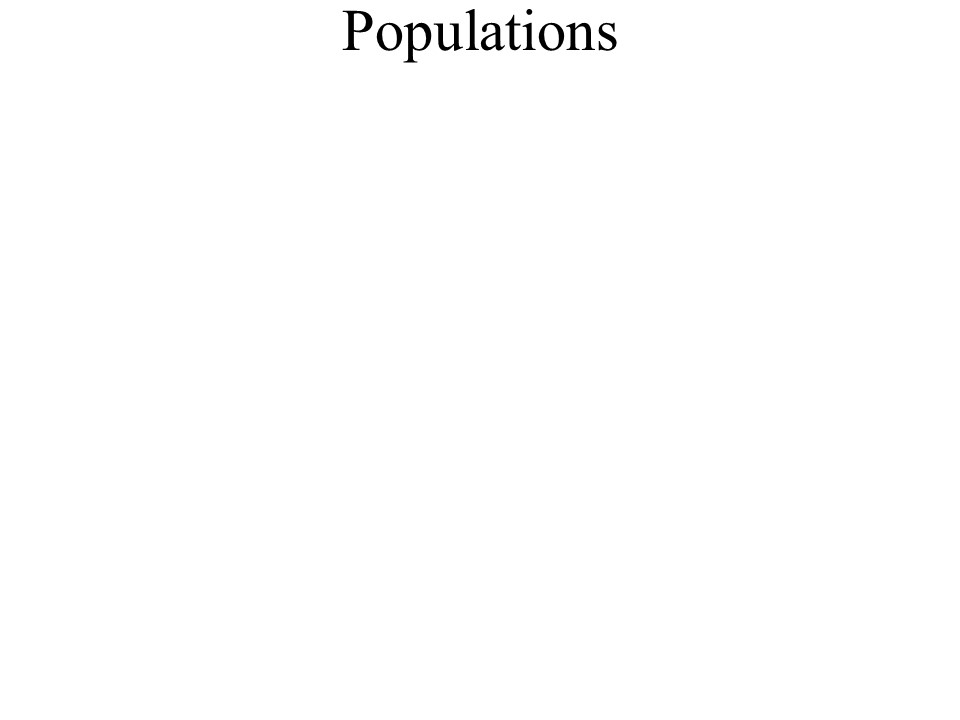Populations - PowerPoint PPT Presentation
1 / 10
Title:
Populations
Description:
Populations Population Density The number of organisms in a population per unit area. Ex. 5 snakes per square mile Ex Tigers low density, mosquitoes high density ... – PowerPoint PPT presentation
Number of Views:96
Avg rating:3.0/5.0
Title: Populations
1
Populations
2
Population Density
- The number of organisms in a population per unit
area. - Ex. 5 snakes per square mile
- Ex Tigers low density, mosquitoes high density
3
Growth Rate
- Change in population size over time
- Positive growth rate- population is increasing
- Negative growth rate- population is decreasing
- Zero growth rate- population size is not changing
Negative
4
Exponential Growth
- Population will increase exponentially (J-curve)
- Not realistic because as population increases
resources become limited. (ex food shortage)
5
Logistic Growth
- Starts out exponential, but levels off at a
certain population size (S-curve) - Carrying Capacity- the maximum population size an
ecosystem can support, leveling off point - Ex. goldfish in a tank
6
R vs. K
- R-selected species- reproduce fast, have many
young, develop quickly. (rabbits) - K-selected species- reproduce steadily, have few
young develop slowly. (kangaroos)
7
Density Dependant Factors
- Factors that have a greater influence on
population size as the population increases - Generally biotic factors
- Ex. competition, predation, parasitism, crowding
stress
8
Density Independent Factors
- Factors that have an impact on population size
regardless of what the population size is. - Generally abiotic factors
- Ex. weather, fires, drought, human activities
9
Succession
- Succession- changing of plant communities
- Primary succession- begins with bare rock from
volcanic activity - ex. Rock- moss grass- shrubs forest
10
Secondary Succession
Secondary succession- begins with soil from a
previous community ex. Fire -Soil- grass-
shrubs-forest Pioneer community- first community
(ex moss,grass) Climax community- ending
community (ex forest)































